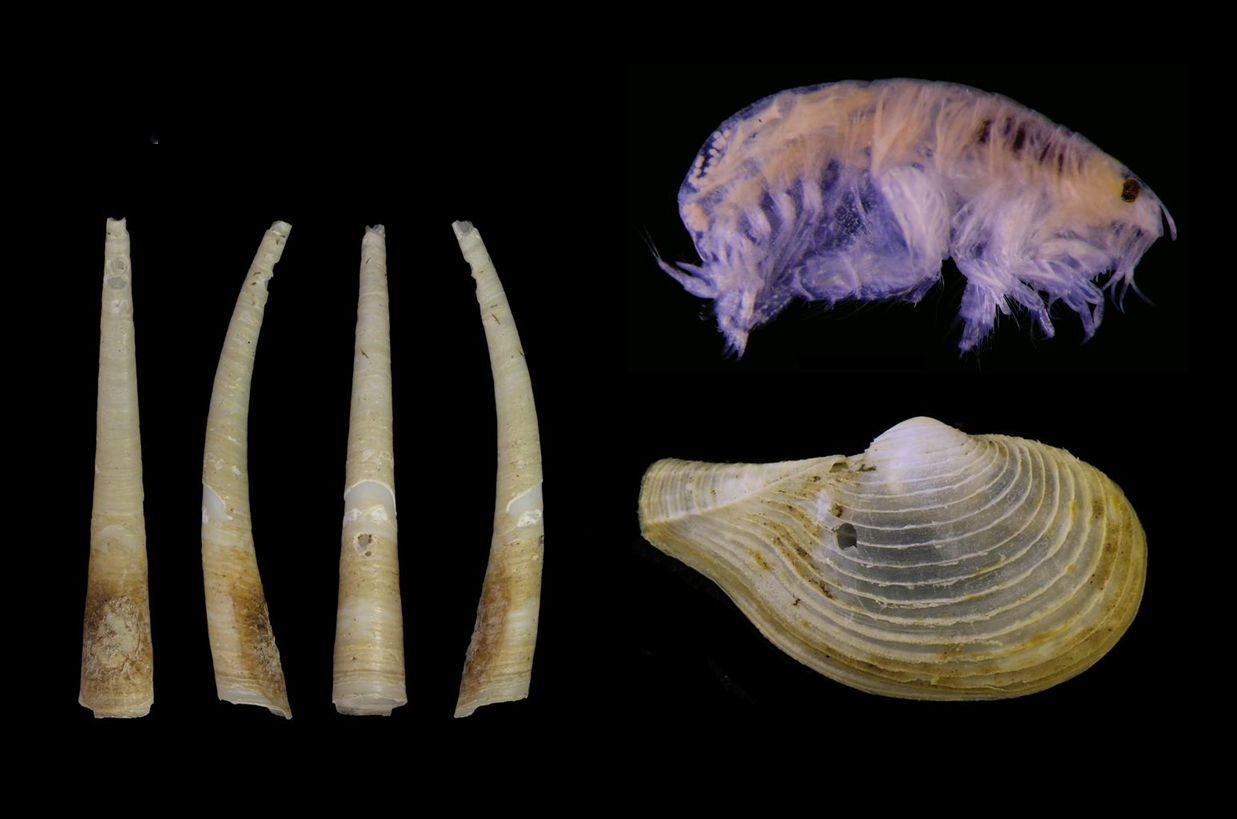Popcorn-like parasites, ghostly crustaceans, and creepy worms are among the 14 new species that have recently been found in the world’s oceans.
Scientists estimate there are around 2 million living marine species, although just a tiny fraction of those have been officially named and described.
In a push to close this knowledge gap, researchers have launched the Ocean Species Discoveries project, a streamlined approach to documenting marine life. By publishing concise, high-quality species descriptions, this initiative aims to speed up the discovery and formal naming of new marine invertebrates.
“Our shared vision is making taxonomy faster, more efficient, more accessible, and more visible,” the team writes in their new paper.

Ooh look, new species: Laevidentalium wiesei (left), Metharpinia hirsuta (top right), and Myonera aleutiana (bottom right)
Image credit: Senckenberg Ocean Species Alliance
This latest haul of 14 new species, including two new genera, is their second major collection.
The newly described species hail from across the globe. The deepest-dwelling is Veleropilina gretchenae, a mollusk recovered from the Aleutian Trench at an astonishing depth of 6,465 meters (21,210 feet). Another mollusk, a bivalve named Myonera aleutiana, was found near the Aleutian Islands, at 5,280 meters (17,323 feet) – about 800 meters (2,625 feet) deeper than any previously documented member of its genus.
Among the crustaceans, Apotectonia senckenbergae was discovered in a mussel bed at the Galápagos Rift hydrothermal vent fields, lurking 2,602 meters (8,537 feet) below the surface.
Perhaps the most unusual is a parasitic isopod called Zeaione everta. This species has odd bumps on the female’s back that look like popped pieces of popcorn. Its genus name, inspired by the corn genus Zea, reflects this quirky resemblance. Found in the Australian intertidal zone, this species also represents a new genus.
Also worth mentioning, there’s Laevidentalium wiesei, a tusk shell mollusk found at depths over 5,000 meters (16,404 feet) that looks, well, like a tusk-shaped shell. Researchers discovered this animal was hosting a sea anemone attached to its outer shell, the first time this kind of relationship has been recorded in this genus.
Roughly 91 percent of all ocean species are yet to be classified, plus more than 80 percent of our ocean is unmapped, unobserved, and unexplored, according to NOAA. As little as 0.001 percent of the seafloor has been directly observed, too. While there’s still a long way to go, efforts like the Ocean Species Discoveries project, among others, are working to better understand our own planet’s seas, one alien-like creature at a time.
The study is published in the Biodiversity Data Journal.
Source Link: Popcorn-Like Parasites And Weird Worms Among 14 New Species Discovered In The World's Oceans